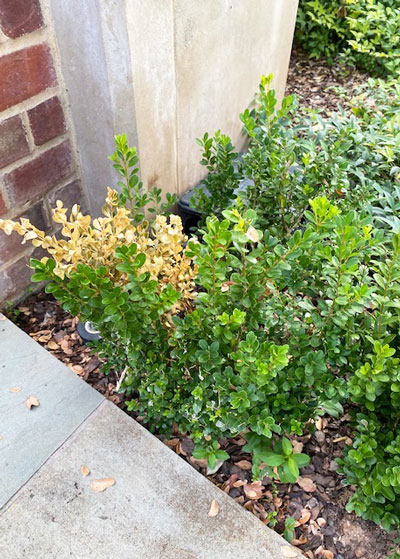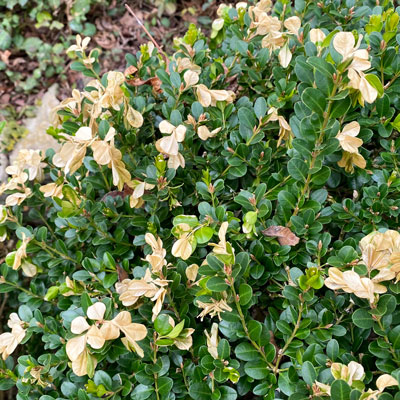Question of the Week – Number Two: January 27, 2022
“I’ve read about boxwood blight. Is that what is affecting my Japanese boxwood?”
Dr. Kevin Ong is the head of the Texas A&M Plant Disease Clinic at College Station. Before that he had been an Extension plant pathologist serving in the North Texas area where I live. As a result, we had the chance to work together on many occasions.


So, my question to Kevin was, “I’m having many questions on boxwoods. Most appear to be small twig dieback that looks like it might be freeze dieback of the past several weeks. But I’m also curious how widespread boxwood blight is in Texas now??”
Dr. Ong’s reply to me was…
“Boxwood blight has never been detected in Texas. We (including the Texas Department of Agriculture) have been looking for it. It has been a cause of some angst within the regulatory circles with regard to movement of boxwoods to other states.”
He included a link to a post from two months ago, saying they had had a number of questions at that time. This information is very useful to home gardeners.
For those who delve really deeply into plant pathology, here is a learned report that will give great detail on Volutella blight of boxwoods. This is not one to read while the kids and grandkids are climbing over your shoulders!
Our state is fortunate to have Dr. Ong and his team to help us with plant disease diagnostics, both at the consumer and commercial levels.
Please do not send questions to Dr. Ong directly. They should be channeled through your local county Extension office. The Plant Disease Clinic is accessible online should you want to have samples cultured and problems identified. Forms and instructions are available at the website.
Just to have shown you what real, confirmed boxwood blight does look like, here is information from the University of Connecticut.
